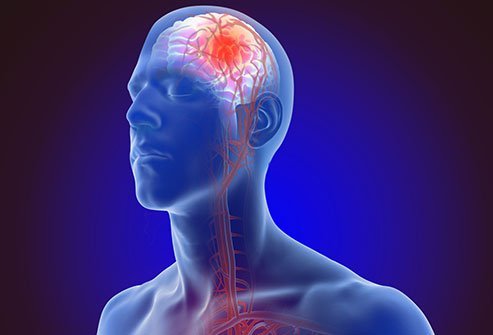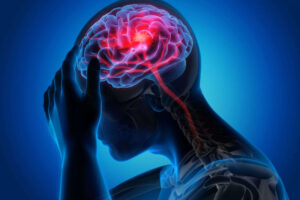Guest Blog-Covid-19 May Act On Brain Leading To Stroke


The surge of Covid-19 infection has led to a clinically significant increase in the risk of stroke among the Covid-19 positive patients. There can be several ways in which Covid-19 affects the brain; the coronavirus may directly affect the nerves and the brain or may cause blood clots in the veins and arteries which in turn decrease the blood flow and inability to carry oxygen to brain cells. Every 20 seconds, one Indian suffers a brain stroke and the numbers are increasing alarmingly due to changing lifestyles. At this rate, around 1.54 million Indians are affected by strokes every year and the worse is 90 percent of stroke patients failed to reach the hospital on time.
Research shows that up to 76% of Covid-19 affected patients may suffer from stroke and other psychiatric symptoms. The covid-19 genetic material in the form of viral genomes may be present in the brain and spinal fluids of Covid-19 patients. This suggests that the virus has the potential to gain access to the brain. If a ‘stroke’ patient gets medical help in four-and-a-half hours of the attack, he or she can expect a faster recovery after a clot bluster therapy. But, unfortunately, only 1-2 percent of such patients get timely medical help – said Dr. Deep Das. In cases of Covid-19 infection, there has been an increasing number of patients showing neurological symptoms with a risk of stroke.
Dr. Deep Das, a consultant neurologist at the hospital, said brain stroke and heart attack have emerged as leading causes of disability and death. “Stroke was a phenomenon of old age. But it has changed now. People below 40 years are also becoming victims of stroke, impacting their productive age. As soon as you notice any sign of stroke, immediately take the patient to the hospital emergency unit. Each moment is very crucial during the treatment of stroke. Usually, we get very little time to carry on with the treatment proceeding for stroke. In case you find involuntary contractions in face, hands or legs, slurred speech or problem in speaking, and any form of disorder in the body actions, immediately start the treatment of the patient under emergency care,” quoting him.
He, however, said a stroke can be prevented by modifying one’s lifestyle. “One can reduce the risk by quitting smoking and drinking alcohol and by controlling obesity and stress,” he said. Nowadays, strokes in young people aged below 45 are on the rise, this is due to stress, lifestyle, and dietary habits which further lead to brain and heart diseases. So many modifiable, non-modifiable, genetic factors and blood-related disorders too are responsible for strokes.”
How to Identify Stroke?
A stroke is a sudden loss of function of a part of the body. It can happen out of the blue. The simple rule to follow in case of a stroke is – ‘BE FAST’ – Balance, Eyes, Face, Arms, Speech, Time,” he advised. If a person suffers from problems in balancing, hoarseness in voice, sudden loss of vision, drops an object, giddiness, the first thing is to rush him to the hospital without wasting time. According to neurologists, people suffer from Ischemic strokes that are a result of blockages. What people are unaware of is – if they seek medical help within 3 to 4.5 hours of the stroke, the blockages may be removed with medication, and the possibility of brain-related disabilities is reduced significantly. According to WHO, the second biggest factor for mortality is stroke and it is alarmingly increasing in India. In fact, 40 percent of stroke patients are from India and China. Even the younger generation has been affected by strokes at an increasing rate due to Covid-19. Young patients without any history of high blood pressure or diabetes are developing stroke symptoms due to blood clots in the brain.
As per studies, the incidence rate of strokes every year in India is 145-154 per one lakh people compared to 107 in the US.
- Clots can form in the brain’s blood vessels, in blood vessels leading to the brain, or even in blood vessels elsewhere in the body and then travel to the brain. These clots block blood flow to the brain’s cells. Ischemic stroke can also occur when too much plaque (fatty deposits and cholesterol) clogs the brain’s blood vessels. About 80% of all strokes are ischemic.
- Hemorrhagic (heh-more-raj-ik) strokes occur when a blood vessel in the brain breaks or ruptures. The result is blood seeping into the brain tissue, causing damage to brain cells. The most common causes of hemorrhagic stroke are high blood pressure and brain aneurysms. An aneurysm is a weakness or thinness in the blood vessel wall.
What Are the Symptoms of Stroke?
The most common symptoms of a stroke are:
Weakness or numbness of the face, arm, or leg on one side of the body. Loss of vision or dimming (like a curtain falling) in one or both eyes. Loss of speech, difficulty talking or understanding what others are saying. Sudden, severe headache with no known cause. Loss of balance or unstable walking, usually combined with another symptom. Careful monitoring of Covid-19 positive patients is a must in order to check their neurological well-being.
What Should I Do If I Experience Stroke Symptoms?
A stroke is a medical emergency. Immediate treatment can save your life or increase your chances of a full recovery.
Is it Possible to Prevent a Stroke?
Up to 50% of all strokes are preventable. Many risk factors can be controlled before they cause problems. In the case of patients who are suffering from Covid-19 disease or just got recovered from it, a medical examination must be thoroughly done to see if there is any blood clot in the brain.
One in every six persons was likely to get a stroke during their lifetime. What is important is the treatment provided post affliction of stroke. Stroke is the third most common cause of disability and death. The risk factors for stroke are diabetes, hypertension, consuming alcohol, smoking, and stress, he said. About 80 to 90 percent of patients can recover in three to six months through physiotherapy and return to a near-normal life.
About the author-Dr. Deep Das, CMRI
